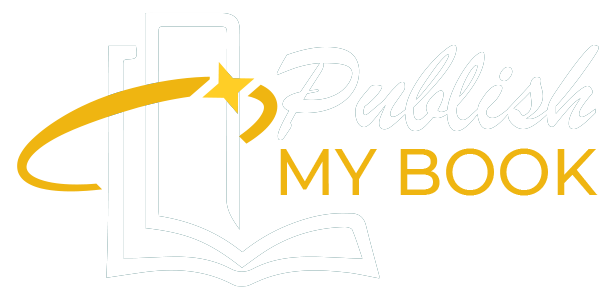
We’ve all been there scrambling at midnight to finish an assignment, only to realize you’ve got one more thing to tackle: citing that eBook you pulled your best quotes from. In the age of self-publishing and digital book platforms, eBooks have become a go-to for students, researchers, and even casual readers. How to cite a ebook MLA: But citing them? With more authors choosing to self publish and a rising number of ebook publishers offering flexible options to publish my book digitally, the lines between traditional print and digital books are blurring fast. What used to be as simple as noting a page number now involves formats, URLs, device types, and digital containers.
But don’t worry, the MLA hasn’t left us hanging. The MLA 9th edition, updated for our ever-digital world, makes room for modern reading habits, and we’re here to walk you through exactly how to use it. Whether you’re citing a Kindle download from an ebook publisher, a self-published memoir, or a book released directly through Amazon by an indie author, this guide will help you cite it with confidence. Let’s dive in how to cite a ebook mla and demystify MLA for eBooks, so you can get back to writing and less time worrying about citation errors.
How to Cite a ebook MLA: Why MLA Citation Still Matters in 2025
In an academic world teeming with AI tools, PDFs, and ever-updating web content, proper citation isn’t just about following rules, it’s about credibility. MLA (Modern Language Association) style remains the gold standard for humanities students, especially in literature, history, philosophy, and the arts.
Citing correctly shows your reader two things:
- You’ve done your homework.
- You respect intellectual property whether it came from a prestigious academic publisher or a self-published ebook uploaded last week.
Core Elements of an MLA eBook Citation
How to cite a ebook MLA: The MLA 9th edition follows a flexible “container system.” Think of it like stacking Russian dolls: the source is inside one or more “containers,” such as a website, database, or digital reader. For eBooks, here’s the general format:
Author’s Last Name, First Name. Title of Book. Name of eBook publisher, Year of Publication. Name of eBook platform or app (if applicable). Let’s break that down step-by-step.
Step-by-Step: How to Cite an eBook in MLA (2025 Version)
1. Author’s Name
Use the standard MLA format: last name first.
Rowling, J.K.
2. Title of the eBook
Put the title in italics and capitalize all key words.
Harry Potter and the Sorcerer’s Stone
3. Book Publisher
Even if it’s a self-published book or released through an ebook publisher, you still need to list the entity that published it.
SelfPub Press,
Penguin Random House,
Amazon KDP (if no other publisher is listed)
4. How to Cite a ebook MLA: Year of Publication
This is typically on the copyright page. For eBooks, use the latest year listed.
2023.
5. eBook Platform (Optional)
Include this if it adds clarity, such as Kindle, Apple Books, or Google Play Books.
Kindle ed.
6. URL or DOI (If applicable)
If you accessed the eBook online (not downloaded to a device), include the URL without “http://”.
books.google.com/harrypotter
Common Mistakes to Avoid
When citing an eBook in MLA, it’s surprisingly easy to make small but significant errors that can impact your credibility. One common mistake is confusing the eBook platform with the book publisher, for example, listing “Kindle” as the publisher instead of “Amazon KDP” or the actual publishing house. Many people also forget to include access information, especially when the eBook was read online through platforms like Google Books or academic databases. Another slip-up is using outdated citation formats like “eBook” or “digital file” instead of more specific terms like “Kindle ed.” or the official platform name. If you’re referencing a self-published work, double-check the author’s name. Some indie authors use pen names or leave out details that are still important for MLA. And finally, relying too heavily on citation generators can backfire; while they’re helpful for a quick reference, they often miss nuances of the MLA 9th edition, particularly when it comes to digital sources. Taking a few extra minutes to review each part of your citation can save you from these common pitfalls and ensure your work looks polished and professional.
What if the eBook Has No Page Numbers?
Great question many eBooks don’t. MLA style doesn’t require page numbers unless your source provides them. If the eBook is paginated, feel free to include page numbers when citing in-text. If not, use chapter or section headings for reference in your essay.
Example in-text citation without page number:
(Atwood, ch. 2)
How to Cite a ebook MLA: Bonus Tips for Students & Writers
- If you’re planning to publish your book, remember your name and publishing details will become part of future MLA citations! Take care with how you list yourself and your book publisher.
- Use citation generators with caution many don’t account for the nuances of MLA 9.
- Always double-check your citation with the official MLA Handbook.
In the end, How to cite a ebook MLA: whether you’re referencing a blockbuster novel from a legacy book publisher or a fresh voice from the world of self publishing, citing your sources correctly in MLA format shows professionalism, accuracy, and respect for the original creators. As eBooks continue to dominate reading lists in 2025, MLA has adapted and so should we. Use the simple steps above to cite confidently, save time, and avoid the dreaded markdown from your professor. And who knows? If you’re planning to publish your book one day, you’ll be on the other end of a citation so pay it forward and get it right today.
